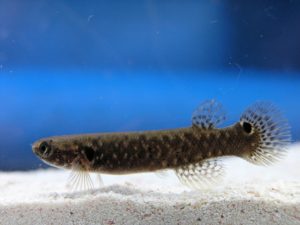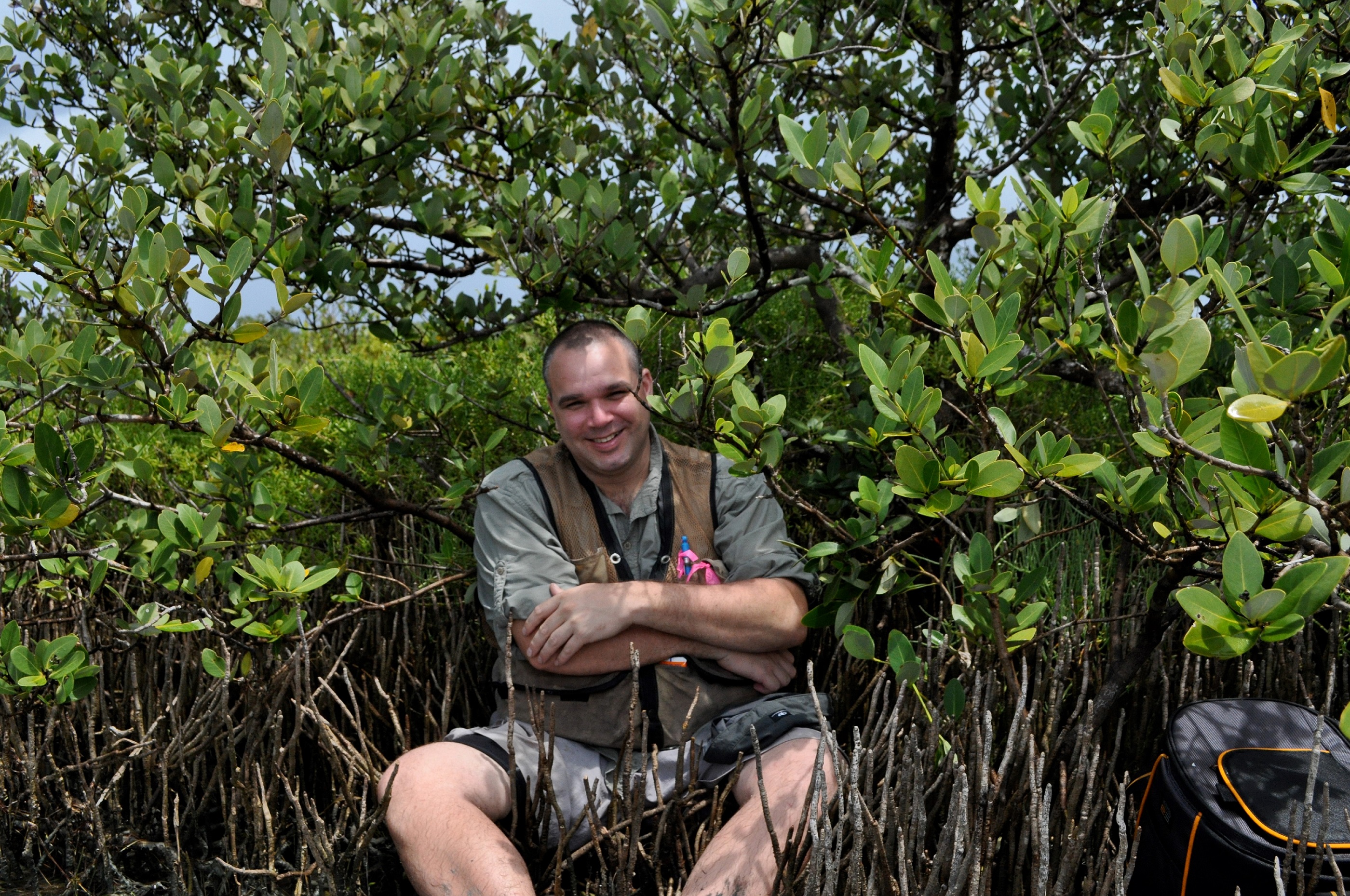
Pollution and chemical imbalances in water could have an adverse effect on animal behavior, particularly in fish that make their home among the mangrove trees along the Florida coast. Dr. Ryan Earley and his students are charting multiple courses to determine what causes changes in how the fish function.
“Our research program has a bunch of different prongs to it,” said Earley, an associate professor in The University of Alabama’s Department of Biological Sciences. “I would say the biggest prong is asking questions about how pollutants infiltrate the environment, especially aquatic ecosystems, and then have damaging effects on the individuals who live there.”
One species of fish in particular caught Earley’s attention. Mangrove rivulus, sometimes referred to as mangrove killifish, live in the waters surrounding their namesake trees, which stretch from the Tampa area to the Florida Keys. They are small fish, and their color ranges between speckled gray and dark brown. What makes them particularly unique, though, is how they reproduce.
“They exist as self-fertilizing hermaphrodites, which basically means they have both boy and girl reproductive parts, make sperm and egg and then can fertilize their own eggs,” Earley said. “This is the only vertebrate that can do it.”
However, that’s not the only way mangrove rivulus can reproduce. Hermaphrodites can change sex into males and mate with other individuals that retain both sexes, although mating between them is rare. Earley and his students are trying to find out why rivulus switch to males if they can self-fertilize from the beginning of life.
Based upon the data his lab has gathered, it’s physically cheaper to be male. Maintaining ovaries takes about six times the amount of energy as testes, so becoming a male could mean dedicating that extra energy to survival against predators or other environmental factors.
“If you took a basic ecology class, you’d be taught that it’s always good for mating to happen because you make new combinations of your genes that might be better at combating any challenges that are in the environment,” he said.
While survival could be the underlying reason the rivulus changes sex, Earley is investigating if pollutants, specifically pharmaceutical drugs, also play a role.

“I think at this point in time it’s a safe bet that all of the waters that we interact with are polluted to some degree,” he said. “It can come in the form of, for example, synthetic estrogens for regulating reproductive cycles, and all of these things eventually get into our natural waterways.”
Earley said synthetic estrogens are endocrine disrupting compounds, which can wreak havoc on the human body as they introduce a new source of artificial hormones. As the body discharges these synthetic hormones into water sources, nanogram levels of these chemicals make their way back into the wild, eventually reaching the fish population and altering their physiology.
“Their ovaries essentially shrivel up, and then we have all sorts of changes,” he said. “All their behaviors go out of whack, and they’re no longer behaving in a way that would be adaptive or beneficial for them in their environment.”
That’s where Earley’s work dives deeper. He and his students take trips to the mangroves in Florida and return with fish, water and sediment samples. In his lab, they can control the environment and establish some form of relationship between the endocrine disrupting compounds and the physiological changes. In their samples, they found four nanograms of synthetic estrogen per liter of ocean water. Using that amount, they expose the fish to these chemicals at various stages of their lives and monitor any changes.
“For example, one of my students demonstrated that when you expose embryos to these synthetic estrogen compounds, you get a really non-intuitive result, which is more sex change to male, which is weird,” he said. “Estrogens are usually thought of as female hormones, yet, when exposed to these chemicals, the fish convert to male more often.”
They also witnessed behaviors linked to survival and reproductive success, such as aggression, risk taking, exploration, activity levels and feeding habits. For them, it was surprising to see how small of a dose made such a dramatic difference at all stages.
“It just blew my mind to see that the ovaries are literally shriveling up in these animals,” said Earley. “I also felt like the whole reorganization of their behavior was unexpected. Not that we don’t think that the hormones have an effect on the brain, but just the extent to which the brain must be changing for those behaviors to change in such an incredible way. We’ve got a lot of work to do, but suffice it to say that these chemicals can be really bad.”
Earley thinks researchers can also determine how these chemicals potentially alter human behavior and physiology.
“It’s a huge leap to go from a fish to a human, but maybe 10 or 20 years down the road somebody will see the data that we’ve collected and be like, ‘now we can help with these aberrant behaviors that humans are showing and that may be related to exposure to synthetic chemicals,’” he said.
That’s why he urges his students to take what they’re learning at UA, further their academic careers and multiply their knowledge.
“I hope that all of the stuff that we do collectively at some point is used in a way that can either improve ecosystem health, improve our understanding of the complexities of the animals that live in these aquatic systems or even improve human health.”
